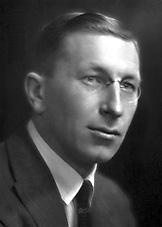Introduction to Insulin / Chemical Properties / Methods of Production and Administering / Diabetes / Insulin Affects History / History Affects Insulin
- Before the 20th century diabetes was a deadly disease
- has been known since antiquity
- the Greek physician Aretaeus of Cappodocia provides the oldest description of diabetes and its symptoms, reporting how the diseases makes “life disgusting and painful; thirst unquenchable;…and one cannot stop them either from drinking or making water”
- the term diabetes derives from the Greek word “to siphon” or “to pass through” since ingested water seems to run quickly through the body
- 18th century British physician coins the medical term diabetes mellitus (the condition mellitus – meaning honey or sweet)
- Wave of research for a “cure”/ treatment for diabetes was spurred by the serendipitous discovery by Paul Langerhans in 1869 of the “little heaps of cells” (Islets of Langerhans) located on the surface of the pancreas
- 1889, Polish-German physician Oscar Minkowki carried out a series of tests on animals to determine the role of the islets in regulating sugar levels
- 1921: discovery and initial development of insulin by Frederick G. Banting, Charles H. Best, James B. Collip, John J.R. Macleod in Toronto
- the discovery of the pancreatic extract helped cure near-to-death patients
- May 1923 New York Times article titled “Diabetes, Dread Disease, Yields to New Gland Cure” recounted how “one by one, the implacable enemies of man, the diseases which seek his destruction, are overcome by science.” Diabetes was “the latest to succumb. Its conquest is a feather in the cap of science.”
- 1923 Banting and Macleod shared the Nobel Prize for the discovery and initial development of insulin
- in spite of the ground-breaking discovery of insulin and miraculous improvement of people’s health world-wide, diabetes today is the primary cause of new-onset blindness, accounts for a third of all cases of kidney failure, leads to half of all non-traumatic limb amputations, and overall stands as the seventh leading cause of death
- Problem: transmutation
- transmuted diseases refer to diseases that transform or change according to the combined effects of treatments and physiological processes.
- transmutation altered the biology of diabetes to create variations of diabetes and other conditions over time
- transmuted diseases refer to diseases that transform or change according to the combined effects of treatments and physiological processes.
- much of the history of diabetes since the 1930 has been a struggle against complications as people try to live with a chronic disease for the rest of their lives
- people with diabetes are prone to a myriad of complications such as coronary artery disease and elevated cholesterol levels
- In a 2006 study by the World Health Organization, diabetics live with a substantial risk of heart attacks, heart failure, stroke, blindness, kidney failure, and nerve damage
- the more tightly a person with diabetes is able to control the levels of sugar in the blood – through treatment, exercise, and diet – the less likely it is that these complications will develop or worsen.
- Problem: transmutation


